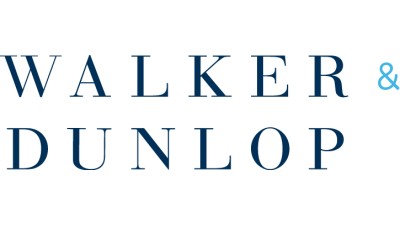Walker & Dunlop Execs On Debt Maturities, Multifamily And Where Smart Money Is Investing

A new year means new opportunities and challenges for the commercial real estate industry. This year, however, may feel particularly daunting with fluctuations in the market, continued high interest rates and uncertainty seemingly around every corner.
To help CRE professionals better comprehend where the market stands and what they need to be focused on in 2024, Walker & Dunlop CEO Willy Walker sat down with three members of his team on this week’s Walker Webcast: Senior Managing Director of Capital Markets Aaron Appel, Executive Vice President of Research and Securities Ivy Zelman and Executive Vice President of Investment Sales Kris Mikkelsen.
Examining The CPI Report
The discussion started with Tuesday’s consumer price index, which Walker described as “disappointing.” The CPI report showed that the annual rate of inflation dropped less than expected to 3.1% last month, which led to a negative reaction on Wall Street. The report also highlighted a surge in the cost of rental housing. Walker asked his team how the numbers have impacted their outlook for 2024.
“I think that the CPI print and the reaction to it was overdone,” Zelman said.
She said the Fed's numbers don't reflect what is happening in multifamily. Walker’s own real-time surveys support decelerating rent growth and they have seen new move-ins go negative across the multifamily sector, so she said the Fed is likely not looking at real-time data to create its reports.
“We're talking to owners and operators on a monthly basis who are pretty significant in terms of sample sizes and they are real boots on the ground,” she said. “That, in our mind, is a better indication of what rents are doing relative to what the Fed is using to calculate [owners' equivalent rent].”
Incoming Debt Maturities
Walker said that there is $930B in CRE debt maturities coming due in 2024. He asked Appel if there is enough capital out there to deal with this wave of refinancing.
“No, there isn’t,” Appel said. “There is a lot of capital in the marketplace. But the problem is that capital all wants certain types of assets and transactions and loan-to-value covenants and debt service coverage ratios and debt yields, and those covenants don't work for the majority of credit that's outstanding on assets.”
He said that while borrowers can still source and transact the capital that is out there, the issue is that those transactions typically require larger cash infusions than many sponsors have the capabilities or the desire to contribute.

Multifamily Outlook
A key multifamily takeaway the Walker & Dunlop team has noticed is that while demand is strong, supply is stronger, particularly in the Sun Belt region. Zelman said that while the backlog of multifamily has been at its highest level since the 1970s, completions are increasing at a robust rate, particularly in the Sun Belt. However, as those properties are getting delivered, they are also getting leased up quickly.
“I think that as long as the job market continues to be more resilient, our outlook is that while rent growth will slow and be down in the 1% to 2% range in 2024 and 2025, we could still see occupancy holding up,” she said.
Regarding the dry powder that is waiting to be deployed into the market, Mikkelsen said that while roughly $250B in capital is on the sidelines waiting, 90% is geared toward generating value-add and opportunistic returns.
“In an environment where transitional financing remains as expensive as it is, it is extremely challenging for that equity to price an opportunity to a value-add or opportunistic return profile and get to a price that any seller will be a taker of,” he said.
Where Smart Money Is Investing
Moving on to investment, Walker asked what the team is seeing smart money invest in, particularly in the urban core.
Appel said that overall, the money has been made by groups providing mezzanine capital and preferred equity capital into existing assets and development deals.
“We just see a plethora of money sitting there looking to inject capital into those positions, he said. “Equity groups are looking to do the same thing that credit groups have been doing for years.”
He also said that a smart equity bet would be to buy new or relatively new multifamily or industrial properties for below replacement cost, sit on those investments for three or four years and then see impressive returns.
Mikkelsen said that the industry has spent the last decade in an expansionary cycle defending premiums to replacement cost while selling assets. Today, everything in the pipeline is trading at a discount to replacement cost. It's just a conversation about the order of magnitude.
“We look at these near-urban and urban assets that oftentimes are trading 25%, 30% and in some instances as much as 40% below replacement cost as justification for a prolonged period of development being out of favor,” he said. “Because, as those trades print, it makes it that much more difficult to capitalize the next new project. So we believe that the runway of no supply, or no new supply, that those assets will have to compete with is no longer there.”
Zelman said she has the privilege of knowing a lot about how public homebuilders think about owning land, and she knows they really don't want it on their balance sheets.
“I think being land bankers today is a very attractive way to tie up capital and get a very strong double-digit return because the builders really want to juice up their returns, but not by not owning land,” she said.
This article was produced in collaboration between Walker & Dunlop and Studio B. Bisnow news staff was not involved in the production of this content.
Studio B is Bisnow’s in-house content and design studio. To learn more about how Studio B can help your team, reach out to studio@bisnow.com.

